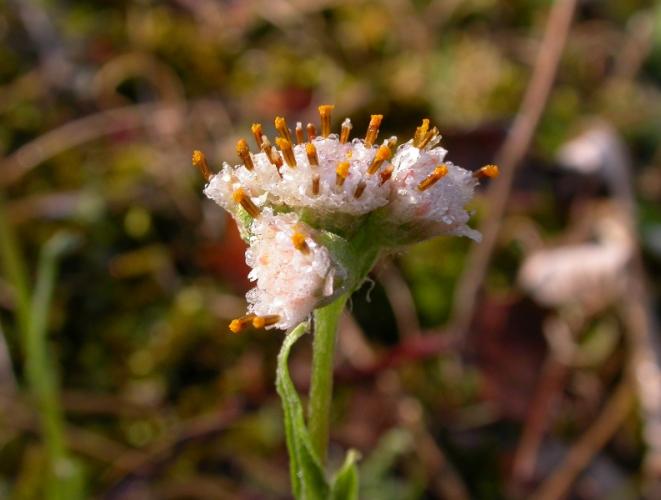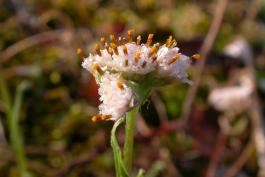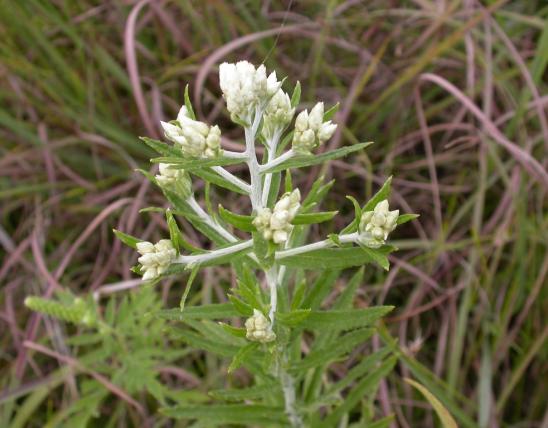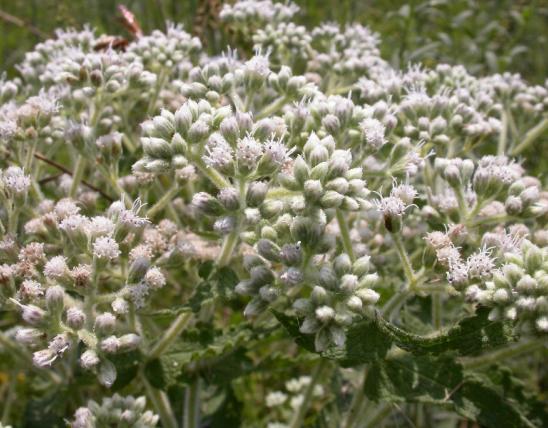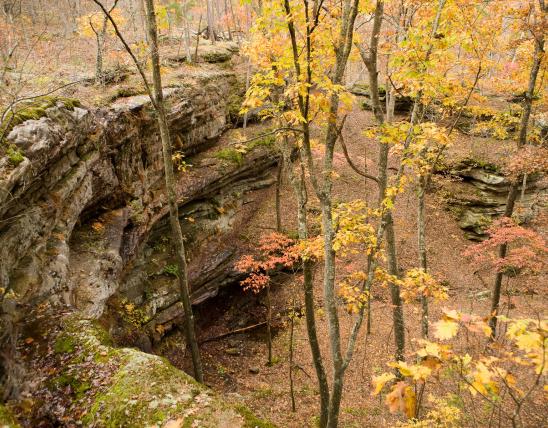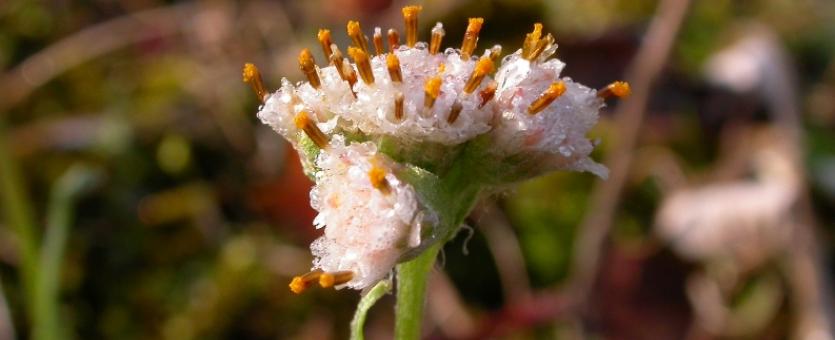
Plainleaf pussytoes is a densely hairy perennial plant. The fuzzy flowerheads account for the name pussytoes. The flowerheads are in tight clusters at the tips of stalks, white to off-white; the plants are either male or female (the plants are dioecious). The styles of female florets are often crimson. Blooms April–June. Leaves are both basal and cauline (on the stems). The basal leaves are paddle-shaped, mostly ¾–1¾ inches wide, on long stems with 3 prominent ribs, and they appear usually after flowering has started. The stem leaves few, almost linear, and short.
Similar species:
- Missouri has two subspecies of plainleaf pussytoes, but they are generally difficult to distinguish from each other. Both are found statewide, with A. parlinii ssp. fallax somewhat less common everywhere except in western Missouri, and A. parlinii ssp. parlinii slightly more common everywhere else in the state. The two subspecies are found in the same regions and habitats and sometimes grow very near one another. Subspecies fallax lacks purplish hairs on the stem, while subspecies parlinii usually has some purplish glandular hairs toward the tip of the stem. Also, ssp. fallax has the basal leaves more densely woolly or felty on the upper surface, while ssp. parlinii has basal leaves only sparsely hairy (often appearing cobwebby rather than woolly) or hairless (glabrous) on the upper surface.
- Our other species, field pussytoes (A. neglecta), looks very similar to plainleaf pussytoes, but its basal leaves are much smaller (less than ¾ inch wide) and have only one central vein (occasionally with an additional faint pair of main veins). Look for it in fields, prairies, and open woods in northern, western, and central Missouri.
Height: to 10 inches.

Statewide.
Habitat and Conservation
Occurs on dry, rocky, often wooded slopes on acid soils; medium to dry upland forests, upland prairies, savannas, and ledges and tops of bluffs; also in glades, ditches, banks of streams and rivers, along margins of ponds and lakes, pastures, roadsides, and open, disturbed areas. This plant is an indicator of acid soil. It is also one of the few flowering plants in our state that lives will in dry, shaded habitats.
Human Connections
Pussytoes, with its unusual flowers, can be cultivated as a ground cover or rock garden plant in difficult dry but shady areas. It attracts birds and butterflies.
The various species of Antennaria have had numerous medicinal uses for Native Americans and folk medicine.
Ecosystem Connections
Plants in this genus can be rather difficult to identify, because they tend to hybridize and create unique new genetic combinations. Botanists have been studying the various types of pussytoes, trying to determine which forms merit distinction as subspecies and which are simply strange hybrids.
The pine elfin butterfly is especially fond of visiting pussytoes flowers for nectar, and its emergence from pupation is timed to coincide with the springtime flowering of this native wildflower. Since its larval food plant is our native shortleaf pine (so the females must lay eggs on the pine), you will find adult pine elfins fluttering around in areas that have both pine trees and blooming pussytoes. Look for pine elfins visiting pussytoes flowers in our Ozark shortleaf pine forests in April and early May.
The American lady butterfly uses Antennaria species and other closely related members of the sunflower family as larval food plants. Their caterpillars feed from inside a tent they build of silk and leaves.
